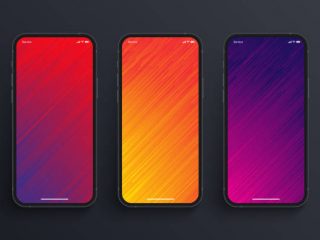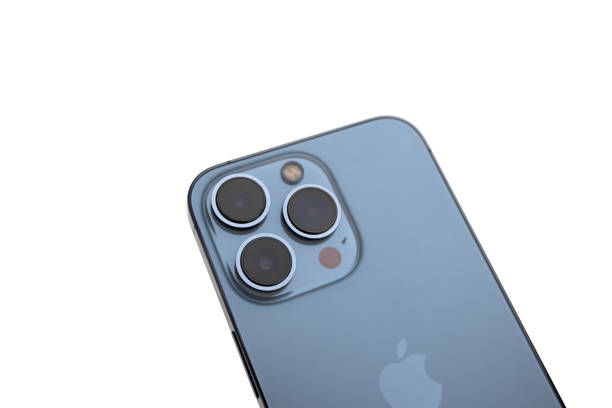
Rostov-on-Don, Russia - December 2021. iPhone 13 Pro in white background. New smartphone from Apple company close-up.
The iPhone 14 is Apple’s upcoming flagship device, and is expected to be the most powerful and advanced smartphone ever created. It is rumored that the iPhone 14 will come with some exciting features, such as a high-resolution AMOLED display, improved camera and processor performance, and more.
Apple has yet to confirm any details regarding the iPhone 14, but rumors indicate it could be released soon this summer. This guide will provide an overview of what we can expect regarding features and design from Apple’s next generation smartphone. We’ll cover topics like design changes, specs upgrades, camera improvements, new software features and more. So let’s get started!
Only iPhone 14 Pro Models to Get ‘A16’ Chip, Standard Models to Retain A15
The iPhone 14 is rumored to feature a sleek and modern design, reminiscent of the iPhone 12. While the exact specs are yet to be seen, it is expected to have a larger display than its predecessors.
In addition, it has been reported that only the iPhone 14 Pro models will be equipped with the A16 chip, while the standard models will retain the A15 chip.
Rumored to be similar to iPhone 12
There has been endless speculation surrounding many features that could make their way to the iPhone 14 later this year. The device is rumored to follow previous models’ design, namely the iPhone 12 range. This means it will have a squared-off design and a more angular look, thanks to its flat edges and slightly more curved sides.
The phone is predicted to have a 5.4-inch display and an in-screen fingerprint scanner for added convenience and security. In addition, it is said to feature an updated A14 chip first seen in the iPhone SE 2020 and promised better stability and performance than ever before.
Regarding battery life, reports indicate that Apple may house the iPhone 14 with a much larger battery than any other model previously released – providing unparalleled stamina for those who use their phone to its full potential daily. Furthermore, it’s reported that Apple could include support for 5G networks on all phone variants – so you can enjoy faster internet speeds no matter where you are in range enabled areas worldwide.
Finally, rumors of enhanced IP68 water resistance capabilities excite us even more about this device’s potential – especially since Apple may also include additional dust protection as part of their design promises.
Will have flat edges
The Apple iPhone 14 is expected to be released at some point this year and we’re already seeing some pretty convincing rumors about the device’s design. According to an increasing number of leaks, it looks like the new iPhone 14 will have flat edges.
Flat edges have been a hallmark feature of iPhones since the introduction of the iPhone 12, but many current models still have rounded corners that give it a more modern aesthetic. However, it looks like Apple is taking that trend one step further by fully committing to having flat edges on future iPhones. This could help create a cleaner look and potentially better ergonomics when holding the phone.
Furthermore, if this rumor is true, you can expect Apple to continue refining their flat edge design with different materials used to construct upcoming models. For example, recent rumors suggest that there will be an increased use of stainless steel for certain components inside upcoming iPhones. This would help create a more luxurious look and provide better durability from damage over time due to extended use or drops.
Display
The iPhone 14 Pro models have been rumored to have a 120 Hz ProMotion display, a feature seen on some of the latest iPad Pros.
The standard models, on the other hand, will reportedly retain the same 60 Hz display used in the iPhone 13.
We will also look at the other features of the display that will be seen on the iPhone 14 models.
Will have 120Hz ProMotion displays
The all-new iPhone 14 will feature ground-breaking ProMotion displays. These displays feature a 120Hz refresh rate, meaning images will appear much smoother, almost lifelike, on the phones’ screens. This is a significant advantage over other devices and iPhones that have had even higher resolutions for years prior.
This advanced display also helps improve the image’s detail as it reduces blur from moving objects. It is also great for gamers and video enthusiasts as it makes operation simpler and more efficient while enabling more realistic effects like faster frame rates. Additionally, this type of display also consumes less power than traditional models, which can help to extend battery life.
The latest ProMotion technology will surely give iPhone 14 users an enjoyable viewing experience when it launches later this year.
Will be OLED
While earlier rumors speculated that Apple may opt for a mini-LED display, the latest leaks suggest that the 2021 iPhone 14 series will feature OLED panels. OLED displays are known for their rich color reproduction, deep black levels and excellent contrast. This could also benefit battery life as OLED displays consume less power than LCDs.
In terms of resolution, Apple is expected to stick with the 2532 x 1170 pixels resolution found on the iPhone 12 Pro and Pro Max models. However, some have suggested that next year’s models could feature a higher resolution display with 3072 x 1440 pixels for enhanced visuals on this smartphone range. It’s also possible that Apple might bring in other improvements like a higher refresh rate panel or an always-on screen option if introduced in the 2021 line-up.
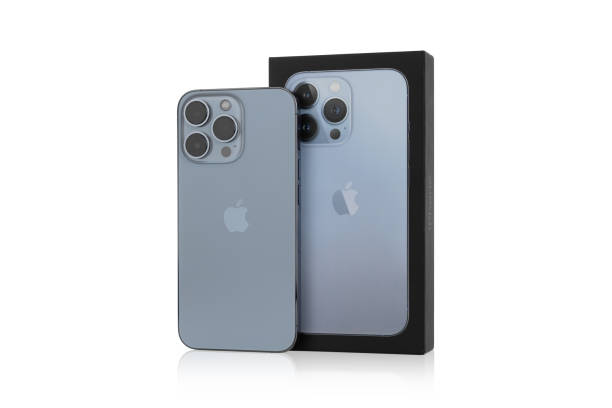
Processor
Reports suggest that the iPhone 14 will have a revamped processor, with the Pro models sporting the A16 chip and the standard models sticking to the A15 chip. This would be a big leap from the A13 chip currently on the iPhone 11. It could mean better performance, speed and improved gaming experience for users.
Let’s look at other features that may come with the processor.
Only Pro models will get A16 chip
The current Pro models of iPhones feature a 5-nanometer A14 Bionic processor, which is 30% faster than the 8-nanometer A13. According to a rumor, Apple will also use the same 5-nanometer A14 Bionic chip in the iPhone 14. But only the Pro and Max versions of the iPhone 14 will feature more advanced A16 chips this year.
The current A-series processor generation is based on TSMC’s Nm process technology. However, apple plans to upgrade this existing technology for the iPhone 14, constructing an even smaller version of these chips. It’ll use TSMC’s N7P manufacturing process for these chips, their second generation of five-nanometer chips.
This new technology promises to bring increased performance and efficiency gains over its predecessor, which may enable longer battery life in future iPhones and more powerful CPUs and GPUs for an overall better experience when gaming or running apps that take advantage of Apple’s powerful GPU cores. The new chips would also help reduce power consumption and enable faster charging times on upcoming iPhone models.
It remains unclear whether or not users who purchase the less expensive regular models such as iPhone 14 Mini would receive similar benefits when it comes to performance and battery life due to their inclusion of the A14 Bionic processor rather than Apple’s more advanced A16 chip variant.
Standard models will retain A15 chip
The latest rumors suggest that an A15 chip will power the standard models of Apple’s upcoming iPhone 14 lineup. This would mark a continuation of Apple’s long-standing tradition of reducing the price tag of their devices, while still keeping performance at a premium.
While some had expected the inclusion of an A16 chip in the upcoming iPhones, that may not be the case. Instead, the A16 X will be included in the Pro models, which have been rumored to have 6GB or 8GB of RAM and up to 512GB internal storage. However, the engineer Tony Blevins pointed out on Microblogging website Twitter that based on his order form, it seems unlikely that either of these phones will come with an A16 processor.
More recently however, Bloomberg has reported that we may see some kind of upgrade over the A15 on both Pro model’s processors although nothing has been confirmed yet. The basic-models are expected to contain only an upgraded version of the A14 chip, similar to what was featured in Apple’s last-gen iPhones and iPads.
This means potential buyers should expect competitive performance from Apple’s entry-level iPhone 14 despite its older processor design than other flagship phone manufacturers. The new lineup is also expected to feature OLED displays larger than even those found in last year’s iPhone 13 series alongside improved cameras and other features such as 5G connectivity and longer battery life with lower power consumption due to their use of advanced silicon technology from TSMC known as N7P node 3nm manufacturing process.
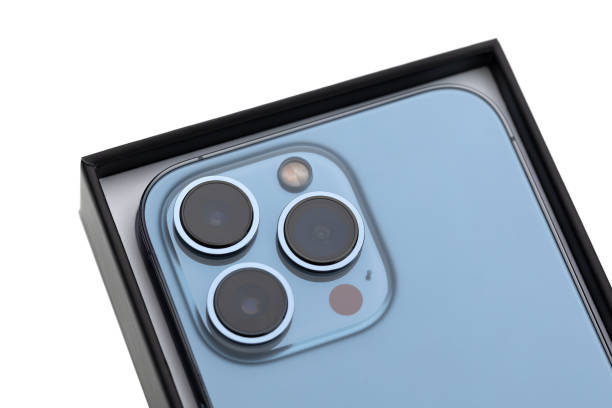
Camera
There has been a lot of speculation about what Apple has in store for the upcoming iPhone 14 models. One of the most exciting features is the camera, rumored to be even more advanced than the current iPhone 13 series.
The Pro models are expected to get an A16 chip, and it’s been rumored that the standard models will retain the A15 chip from the current series.
Let’s look at the camera updates we can expect from the iPhone 14.
Will have an improved camera system
The iPhone 14 is expected to have an even more advanced camera system than its predecessor. The device will feature an all-new 12MP main sensor and a large ultra-wide angle lens, perfect for capturing expansive landscapes and wide portraits. It will also have a dual-lens telephoto zoom that can capture detailed images as far away as 10x optical zoom.
The new camera system captures sharper images in low light, with improved auto white balance and better dynamic range. In addition, photography will become even easier thanks to improved auto focus, plus smart HDR and portrait lighting modes that allow users to perfect their shots without having to digging settings or make compl manually making complicated edit satures that are likely included in the iPhone 14’s camera system include faster autofocus speeds enabled by LiDAR technology, 1080p slow-motion video capture at 120fps, RAW image file support for professional editors, 4K video capture up to 60fps throughout all models, along with 4K time lapse at defined intervals for creative photography fans.
With so many amazing features, it’s no wonder Apple fans worldwide have highly anticipated the iPhone 14’s camera system!
Will feature LiDAR scanner
One expected feature of Apple’s upcoming iPhone 14 is a LiDAR scanner, or Light Detection and Ranging scanner. A LiDAR scanner sends out laser beams and measures the time it takes for them to bounce back; this allows it to build accurate 3D images in real time.
Introducing the LiDAR scanner on the iPhone 14 would put it on par with other flagship phones such as Apple’s iPad Pro, which has had LiDAR capability for several years. In addition, this would allow Apple to offer more advanced cameras in its phones, allowing users to capture better photos and videos.
Beyond improved photography capabilities, LiDAR could also open up new possibilities for augmented reality applications. For example, having a 3D map of its surroundings provided by the LiDAR scanner would allow AR-based apps to provide more realistic visuals and interactive experiences.
Including the LiDAR Scanner could also improve camera performance in low-light scenarios by using infrared waves instead of relying solely on visible light emitted from its flash. In addition, any uses that require precise measurements such as virtual measuring tapes or measuring distances between objects could be made possible with the help of an accurate 3D map provided by the LiDAR scanner.
Battery
With the release of the iPhone 14 Pro models, the rumor mill has been churning with speculations and expectations about the upcoming device. One of the most commonly discussed topics of the iPhone 14 is its battery life. Apple has always struggled to keep up with its competitors in this area, and the iPhone 14 is rumored to take a step forward.
Reports suggest that the Pro models of the iPhone 14 will be powered by an A16 chip, which may bring more battery life to the device than the A15 chip used in the standard models.
Let’s take a closer look at the battery features of the iPhone 14.
Will have improved battery life
Apple’s iPhone 14 is expected to have improved battery life when released later this year. According to reports, the device’s chemically-enhanced battery could provide up to 5 hours of additional daily usage. This makes it a strong competitor in the smartphone market, as many devices still struggle with suboptimal battery life.
The improved battery life will come from Apple’s adoption of new light catcher stack chemistry developed by the American Rice Lake Association. This new technology involves a combination of composite materials and electrolytes, providing an enhanced energy source and faster charging times. Apple’s 2020 iPhones have already shipped equipped with significantly improved overall battery life compared to earlier models. This further affirms the electronic giant’s commitment to pushing forward mobile technologies and addressing areas where consumers demand more from their devices. With this new stack chemistry, Apple could push the limits even further in 2021 with its iPhone 14 series.
Apple is also said to be adding other features like advanced wireless charging support that could significantly reduce recharge time for its upcoming models – for example, current iPhones charge at around 7 Watts but models with this new tech support up to 15 Watts charging wirelessly – making sure owners never miss out on potential use time; perfect for those always-on-the-go moments where you just need your device ready with minimal fuss!
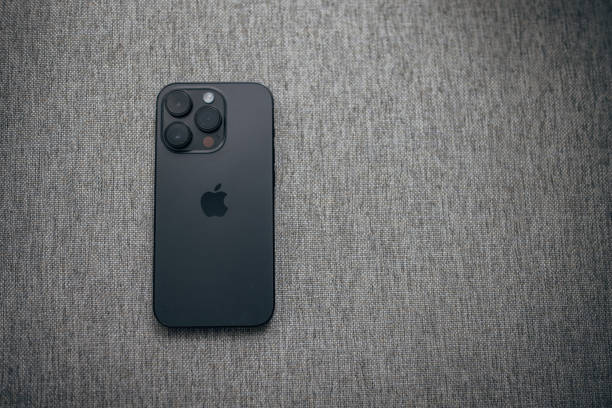
Price
As with many new models of the iPhone, the release of the iPhone 14 is expected to come with a higher price. Analysts suggest that the Pro models of the iPhone 14 could have a price hike of up to 10%.
This price increase could be due to the top-of-the-line A16 Bionic Chip that will be released exclusively in the higher-tier iPhones. On the other hand, the standard models of the iPhone 14 are projected to retain the A15 chip featured in the current iPhone 13.
Will be more expensive than iPhone 12
The iPhone 14 series is expected to come with various features to make it stand out from previous iPhone models and competitors. With such features, it is likely that the new series either match or exceed the price of the iPhone 12 series.
Previous reports have suggested a base model for the standard iPhone 14 at $749 and an additional $50 for the larger variant to reach $799. However, recent reports have argued that this may not cover Apple’s cost. Given this information, these prices may be slightly higher than previously expected.
Furthermore, certain high-end models may feature a 6GB RAM or even 8GB RAM combined with 5G capabilities and larger battery capacity which could add further to the cost of these devices. That said, analyst Ming Chi Kuo has suggested a range between $649 and $749 for the baseline versions of iPhone 14 devices. At the same time, certain variants including Pro Max can reach as much as $1,099 (a significant increase from its current version which offers similar specs).
Overall, there is no definite answer yet regarding what the exact pricing will be like for iPhone 14 devices until they officially launch in fall 2021; however, given Apple’s constant advancement in technology it is safe to assume that customers should expect prices likely to exceed those of its predecessors and competitors as well.
Conclusion
The iPhone 14 is set to be the first iPhone to come with 5G connectivity and is expected to have a new design. It’s also expected to come with several other improvements such as faster A-series chips, improved Face ID, improved cameras and expanded storage options. Additionally, it has been speculated that the release of the next-gen iPhone could coincide with the release of iOS 14.
We don’t know what features will be included in the iPhone 14 until Apple gives us more information. However, based on what we know so far, we can expect an upgrade in design and performance from the previous generation iPhones. Including 5G support could revolutionize how we experience mobile data speeds and enable us to enjoy cloud gaming, virtual reality and augmented reality experiences like never before on smartphones.

